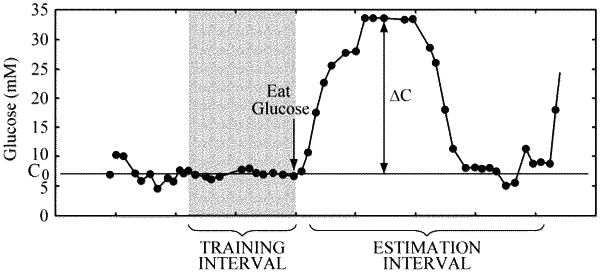| CPC A61B 5/14532 (2013.01) [A61B 5/7203 (2013.01); G06F 17/153 (2013.01); G06F 17/18 (2013.01); G16B 40/10 (2019.02); G01N 21/359 (2013.01); G01N 2021/3155 (2013.01)] | 20 Claims |

|
1. A method of estimating a concentration of an analyte, the method comprising:
obtaining a plurality of in vivo estimation spectra;
generating a plurality of noise detection models by varying a number of principal components from among the plurality of in vivo estimation spectra;
comparing the generated plurality of noise detection models with a plurality of concentration estimation models for each number of principal components, wherein each of the plurality of concentration estimation models uses a different number of principal components than another of the concentration estimation models;
extracting a noise spectrum and a concentration estimation model for use in estimating the concentration of the analyte based on the comparison;
updating the extracted concentration estimation model based on the extracted noise spectrum; and
estimating the concentration of the analyte by using the updated concentration estimation model and an in vivo estimation spectrum from among the plurality of in vivo estimation spectra,
wherein the extracting of the noise spectrum and the concentration estimation model for use in estimating the concentration of the analyte comprises:
determining a correlation coefficient for each number of principal components by comparing the generated plurality of noise detection models with the plurality of concentration estimation models for each number of principal component.
|